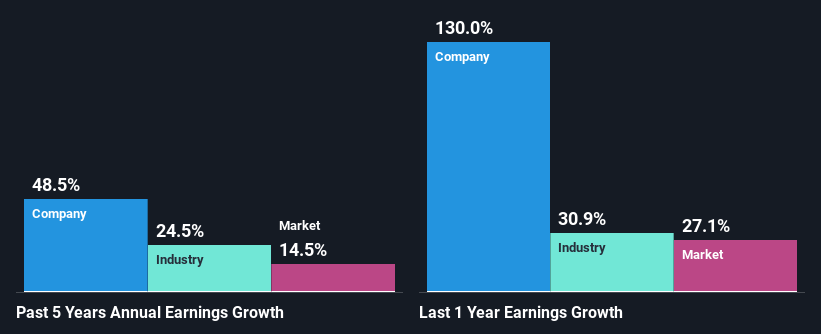Declining Stock and Decent Financials: Is The Market Wrong About Clarus Corporation (NASDAQ:CLAR)?
Clarus (NASDAQ:CLAR) has had a rough month with its share price down 9.2%. However, stock prices are usually driven by a company’s financials over the long term, which in this case look pretty respectable. Specifically, we decided to study Clarus' ROE in this article.
Return on equity or ROE is an important factor to be considered by a shareholder because it tells them how effectively their capital is being reinvested. Put another way, it reveals the company's success at turning shareholder investments into profits.
See our latest analysis for Clarus
How To Calculate Return On Equity?
Return on equity can be calculated by using the formula:
Return on Equity = Net Profit (from continuing operations) ÷ Shareholders' Equity
So, based on the above formula, the ROE for Clarus is:
6.7% = US$26m ÷ US$383m (Based on the trailing twelve months to March 2022).
The 'return' is the amount earned after tax over the last twelve months. So, this means that for every $1 of its shareholder's investments, the company generates a profit of $0.07.
Why Is ROE Important For Earnings Growth?
Thus far, we have learned that ROE measures how efficiently a company is generating its profits. Based on how much of its profits the company chooses to reinvest or "retain", we are then able to evaluate a company's future ability to generate profits. Assuming everything else remains unchanged, the higher the ROE and profit retention, the higher the growth rate of a company compared to companies that don't necessarily bear these characteristics.
A Side By Side comparison of Clarus' Earnings Growth And 6.7% ROE
On the face of it, Clarus' ROE is not much to talk about. Next, when compared to the average industry ROE of 29%, the company's ROE leaves us feeling even less enthusiastic. However, we we're pleasantly surprised to see that Clarus grew its net income at a significant rate of 49% in the last five years. So, there might be other aspects that are positively influencing the company's earnings growth. Such as - high earnings retention or an efficient management in place.
As a next step, we compared Clarus' net income growth with the industry, and pleasingly, we found that the growth seen by the company is higher than the average industry growth of 25%.
Earnings growth is an important metric to consider when valuing a stock. It’s important for an investor to know whether the market has priced in the company's expected earnings growth (or decline). Doing so will help them establish if the stock's future looks promising or ominous. Has the market priced in the future outlook for CLAR? You can find out in our latest intrinsic value infographic research report.
Is Clarus Efficiently Re-investing Its Profits?
Clarus has a really low three-year median payout ratio of 17%, meaning that it has the remaining 83% left over to reinvest into its business. This suggests that the management is reinvesting most of the profits to grow the business as evidenced by the growth seen by the company.
Moreover, Clarus is determined to keep sharing its profits with shareholders which we infer from its long history of four years of paying a dividend. Upon studying the latest analysts' consensus data, we found that the company's future payout ratio is expected to drop to 4.8% over the next three years. As a result, the expected drop in Clarus' payout ratio explains the anticipated rise in the company's future ROE to 11%, over the same period.
Summary
In total, it does look like Clarus has some positive aspects to its business. Despite its low rate of return, the fact that the company reinvests a very high portion of its profits into its business, no doubt contributed to its high earnings growth. With that said, the latest industry analyst forecasts reveal that the company's earnings growth is expected to slow down. Are these analysts expectations based on the broad expectations for the industry, or on the company's fundamentals? Click here to be taken to our analyst's forecasts page for the company.
Have feedback on this article? Concerned about the content? Get in touch with us directly. Alternatively, email editorial-team (at) simplywallst.com.
This article by Simply Wall St is general in nature. We provide commentary based on historical data and analyst forecasts only using an unbiased methodology and our articles are not intended to be financial advice. It does not constitute a recommendation to buy or sell any stock, and does not take account of your objectives, or your financial situation. We aim to bring you long-term focused analysis driven by fundamental data. Note that our analysis may not factor in the latest price-sensitive company announcements or qualitative material. Simply Wall St has no position in any stocks mentioned.

 Yahoo Finance
Yahoo Finance 
